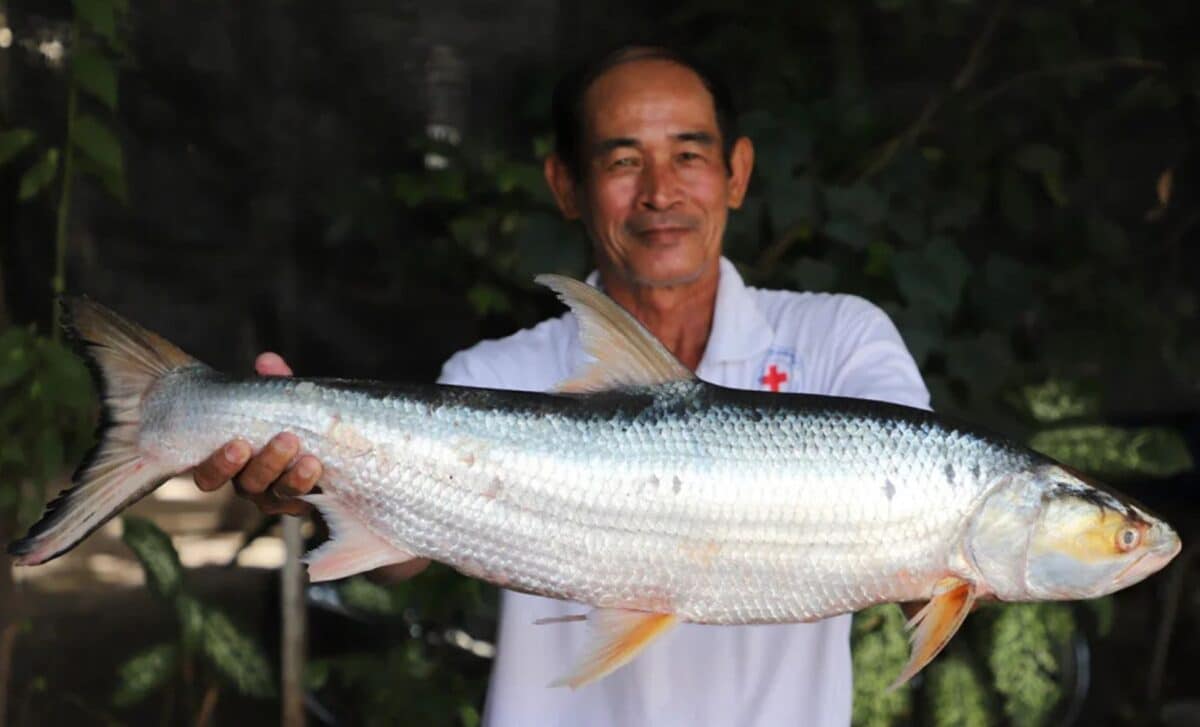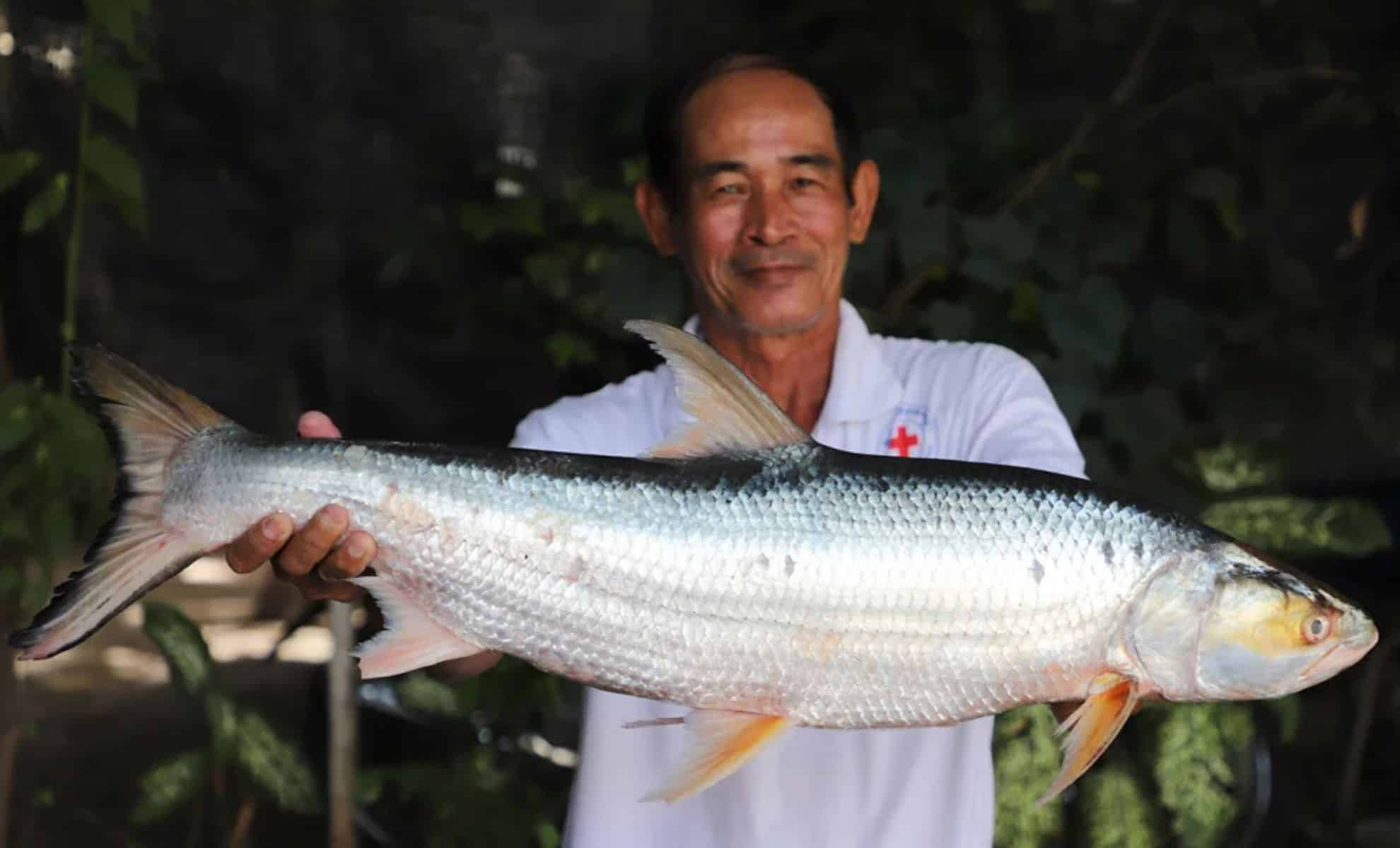The giant fish, known as the “Mekong Ghost,” has been rediscovered in Cambodia’s Mekong River after nearly two decades. This critically endangered species, once thought to be extinct, has been spotted multiple times between 2020 and 2023, offering a glimmer of hope for the health of the Mekong’s biodiversity.
Critically Endangered Giant Fish Thought Extinct Found in Cambodia’s Mekong River

In an exciting development for conservationists, the giant salmon carp, a critically endangered species once thought to be extinct, has been spotted in the Mekong River for the first time in nearly two decades.
Known locally as the “Mekong Ghost,” this elusive fish had not been officially documented since 2005, prompting fears that it had disappeared entirely from the river's ecosystem. However, recent sightings in Cambodia have brought renewed hope for the species and the health of the Mekong River itself.
Rediscovering a Symbol of the Mekong
The giant salmon carp, capable of growing up to four feet long and weighing as much as 66 pounds, is a rare and iconic species native to the Mekong River. Distinguished by a peculiar knob at the tip of its lower jaw and a striking patch of yellow around its large eyes, the fish is a predatory species integral to the region’s biodiversity. The recent rediscovery of the species came as a surprise to researchers, as fewer than 30 individuals had ever been recorded since the species was named in 1991.
The rediscovery began with a 2020 sighting by Cambodian fishermen who alerted researchers after catching a large, unfamiliar fish. Though the specimen was sold before scientists could examine it, photographs confirmed that it was indeed the Mekong Ghost. This sighting prompted renewed efforts to monitor the species, leading to further discoveries between 2020 and 2023, when two more fish were caught and examined by an international team of researchers.
Zeb Hogan, a fish biologist at the University of Nevada, Reno, and a key figure in the Wonders of the Mekong project, expressed his excitement, saying, “I thought it was probably extinct, and so to hear that it had been found again—I’ve been waiting 20 years for that news. It’s a sign of hope. It means that it’s not too late.”

Threats Facing the Mekong and Its Biodiversity
While the rediscovery of the giant salmon carp is cause for celebration, it also highlights the significant challenges facing the Mekong River and its inhabitants. The river, which spans multiple Southeast Asian countries, is one of the most biodiverse ecosystems in the world, home to over 1,100 species of fish. However, this biodiversity is under constant threat from human activities such as hydropower development, overfishing, and habitat degradation.
More than 700 dams have been built along the Mekong and its tributaries, disrupting the migratory patterns of fish species, including the giant salmon carp, and hindering their ability to reproduce. Many fish populations struggle to navigate these obstacles, which are exacerbated by the lack of effective “fish passages” to assist their movements. Additionally, climate change is contributing to more extreme weather patterns in the region, with floods and droughts further threatening the river’s delicate ecosystems.
Brian Eyler, director of the Southeast Asia Program at the Stimson Center, who was not involved in the research, emphasized the broader implications: “The plight of the fish also spotlights the perils facing all migratory species in the Mekong, which faces industrial pollution and overfishing.”
Collaboration with Local Communities Offers Hope
The rediscovery of the Mekong Ghost owes much to the collaboration between scientists and local fishing communities. Since 2017, biologists working in Cambodia have developed strong relationships with fishermen, asking them to report any unusual sightings of fish. These partnerships have proven invaluable, as local communities possess intimate knowledge of the river’s wildlife and can serve as the eyes and ears for conservationists.
Bunyeth Chan, a researcher at Svay Rieng University in Cambodia and a co-author of the study documenting the fish’s rediscovery, said, “Even though the fishermen … hadn’t seen the fish before, they knew that they had something remarkable, unusual. They knew that it was worth contacting us.”
Moving forward, researchers hope to expand these efforts by working with communities in neighboring Thailand and Laos to track the movement of the species across the Mekong. Although the recent sightings of the giant salmon carp have been outside its typical range, this could indicate that the fish is migrating or that it inhabits previously unknown areas of the river.
A Call to Action for Mekong Conservation
Despite this positive rediscovery, conservationists warn that the Mekong River remains at a critical juncture. A March 2024 report from 25 environmental organizations, including the World Wildlife Fund, revealed that nearly 20% of the Mekong’s fish species are threatened with extinction. The combination of human activity, climate change, and government inaction poses a grave risk to the river’s future.
Environmental activism in Cambodia also faces significant political challenges, as many activists have been jailed or killed for raising awareness about environmental issues. This difficult climate for conservation further complicates efforts to protect the Mekong and its species.
Nevertheless, researchers like Zeb Hogan remain optimistic. The rediscovery of the giant salmon carp is a powerful symbol of resilience and offers a glimmer of hope for the future of the Mekong’s wildlife. “This fish is an indicator of river health because it’s a large fish, it’s vulnerable,” Hogan explained. “But it’s also emblematic of all of these other fish that occur in the area that are key fishery species and that are very important for people’s livelihoods, and very important for people’s nutrition and food.”



